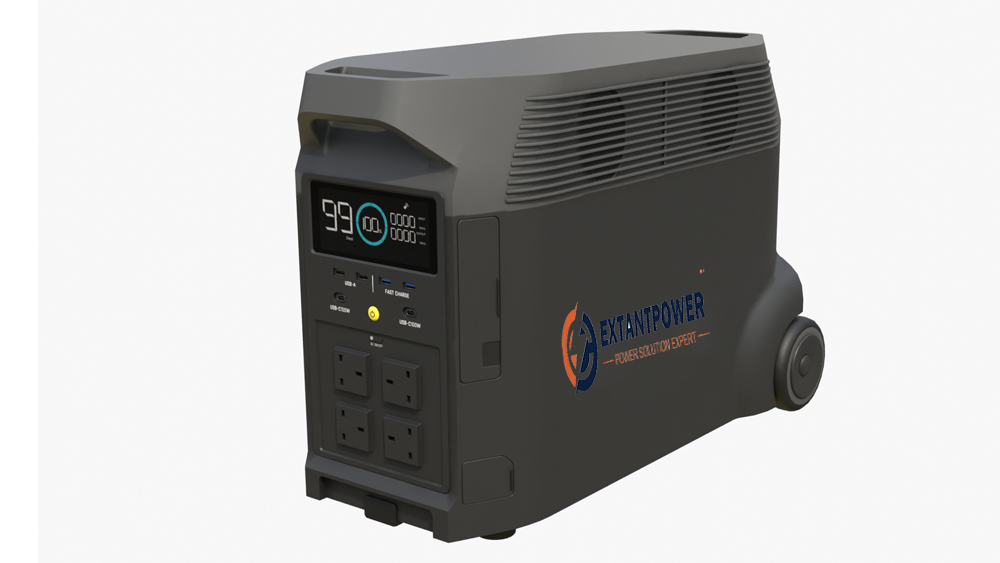
Portable power stations are devices that use alternative energy sources to create and store electricity. With a portable power station, you can have access to clean, renewable energy anywhere you need it. These compact units provide reliable power during a crisis and can be used in various locations without being disturbing or dangerous. They are also perfect for camping and remote locations where power may not be reliable. Whether you’re an off-grid kind of person, you live off the grid or simply want more independence from utility companies, having your own portable power station is essential in this digital age. Portable power stations have many other uses as well: You can take one with you on vacation, use it at home during peak demand times or even keep one in your car for emergencies.
How to Charge a Portable Power Station?
If you want to use your portable power station, you have to charge it first. Most units come with a built-in battery, and all you have to do is plug the device in and let it charge. Charging times vary depending on the type of power station you have, but it usually takes several hours to charge a fully depleted battery. Solar panels are the best option to charge your power station. You can either use it for direct charging or for charging a battery that powers the unit. If you don’t have a solar panel, you can also charge it with a generator or a hand-cranked dynamo. When you charge your power station, you’ll have to decide how much power you want to store in the battery. For example, if you want to use the device on cloudy days, you should charge it with more power than you need on sunny days.
Recharging with Solar
For solar recharging, you need to connect your power station to a solar panel. You can use clamps or create a temporary connection using duct tape. You can mount the solar panel on the roof of your house or on the ground. If you’re using a portable solar panel, you can place it wherever the sun is shining, such as on a table or on the ground. Simply connect the solar panel to the power station and let the sun do the rest. For optimal recharging, position the solar panel so it’s facing the sun. You may need to turn the panel periodically throughout the day to keep it in direct sunlight. It’s also a good idea to place the panel in a location where it won’t be obstructed by trees, buildings or other objects that could block the sun.
Recharging with Generator
If you have a gas-powered generator, you can use it to charge your power station. Be aware that some generators are not meant to be used to charge batteries, so check your model to see if it will work for recharging a battery. To charge your power station with a generator, connect the device to the generator using heavy-duty cables. It’s important not to use extension cords because they may overheat and pose a fire hazard. You can place the generator inside or outside your house, but it’s best not to put it near an open window or door because the noise may disturb your neighbors.
Recharging with Dynamo
If your portable power station uses a hand-cranked dynamo, you can use it to charge the unit’s battery. Simply crank the dynamo for 10 to 15 minutes to charge the unit for about 30 minutes. Note that hand-cranked dynamos are generally not as efficient as solar panels, so it could take longer to charge the unit. If you use a hand crank, you need to consider that it can take anywhere from 30 minutes to several hours to charge the battery. It depends on how much juice is left in the battery, the speed of your cranking and other factors. You can’t control the charging speed, but you can maximize the process by re-cranking the dynamo when you feel like you’re slowing down.
Check the Battery Status
You should check the battery status regularly to make sure it’s in good condition. If you notice any signs of swelling, discoloration or any other abnormalities, take the battery out of the unit and dispose of it immediately. If your battery gets too hot, it could explode. Batteries used in portable power stations are lithium-ion batteries, and they are very powerful and efficient. But they also pose a fire risk if they get too hot. Check the battery regularly and follow the manufacturer’s instructions for cleaning and maintenance. You can use a spray or a brush to clean the battery. Be careful not to get water inside the battery because that could cause corrosion and lead to an explosion.
Conclusion
Portable power stations are a great way to stay powered up during an emergency. They come in many different shapes and sizes and can power just about anything — from your laptop to a large industrial tool. But to make them useful, you need to charge them first. There are several ways to recharge a portable power station, but solar recharging is the best option. It’s environmentally friendly, it doesn’t cost anything and it doesn’t generate noise.
